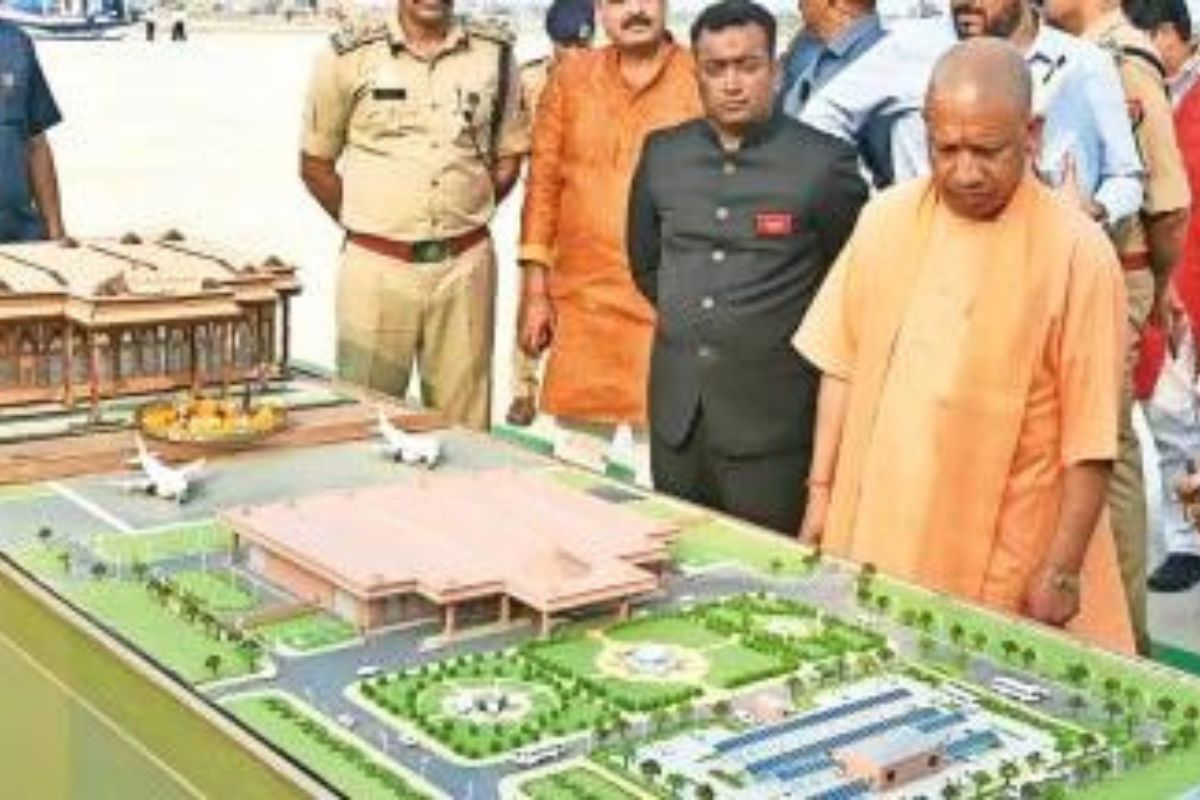Ayodhya to get 1,000 new CCTV cameras to further strengthen security
With the aim of developing the temple town into a smart and safe city, the Ayodhya Municipal Corporation has devised an ambitious master plan under the Smart City Mission.
Vision 2047 places significant emphasis on solar energy within Ayodhya’s comprehensive development plan.
Statesman News Service | Ayodhya | January 5, 2024 4:04 pm

Ayodhya is taking strides towards clean energy solutions to address its energy requirements. Currently, the work of development and operation of a solar power plant capable of generating 40 MW electricity in Majha Rampur Halwara village of Navya Ayodhya has reached the final stage.
In line with Chief Minister Yogi Adityanath’s vision to harness solar energy for power generation, a solar power plant is currently under development and operation, spanning over 165 acres at a cost of Rs 200 crore. It’s worth highlighting that Vision 2047 places significant emphasis on solar energy within Ayodhya’s comprehensive development plan.
Advertisement
Consequently, the establishment of this solar power plant is poised to play a pivotal role in steering Ayodhya towards becoming a city powered by solar energy.
Advertisement
For the establishment of this plant, under the guidance of CM Yogi, the district administration has provided land on 30-year lease to Uttar Pradesh New and Renewable Energy Development Agency (UPNEDA) at the rate of Re 1 per acre per year. UPNEDA, in turn, has engaged NTPC Green Energy Limited to operate the plant on this land. For the development and operation of the plant, Jackson Solar, a notable solar panel producer and a prominent player in the solar energy sector in the country, has been contracted by NTPC through a Power Purchase Agreement (PPA).
Ratan Singh, Head of Project and Additional General Manager of NTPC Green Energy Limited, informed here on Friday that the total capacity of this solar power plant will be 40 MW power generation and it will produce 8.65 crore units of power per year. The total cost of this project is Rs 200 crore and the work of development of the plant located in 165 acres has been entrusted to Jakson Solar, which is a leader among the Indian companies working in the solar energy sector.
A total of 1,04,580 solar panels with a power output of 550 and 555 watts are installed in this plant. The scheduled inauguration of the plant is set for January 22, initially operating at a capacity of 10 MW power generation. Following the inauguration, the plant is expected to scale up to its full capacity. When operated at full capacity, this plant will be able to meet 10 percent of the total electricity consumption of Ayodhya. The electrical energy generated from the plant will be transmitted to the Darshannagar sub-station through a 132\33 KV overhead power line.
At present, a workforce of about 300 people has been deployed in the plant for the ongoing work. Once completed, the plant will require only 15-20 people to operate, with technical and handling staff being the most important. UPNEDA Project Officer Praveen Nath Pandey said that apart from realizing CM Yogi’s grand vision of Ayodhya, this project will also be economical and environment friendly.
According to him, instead of power generation from coal, power generation here will help prevent 47,000 thousand tonnes of carbon dioxide emissions every year. This translates into a significant impact, preventing emissions equivalent to the carbon dioxide absorption capacity of 17 lakh trees. The initiative is poised to become a significant milestone in Ayodhya’s journey to establish itself as a model solar city. Furthermore, it will set the stage for transforming Ayodhya into a city powered by solar energy.
Advertisement
With the aim of developing the temple town into a smart and safe city, the Ayodhya Municipal Corporation has devised an ambitious master plan under the Smart City Mission.
A medical student from Ayodhya was among the injured in the Air India plane crash in Ahmedabad yesterday.
After a long wait and facing several allegations of land scams levelled by the Opposition, the Ayodhya district administration has hiked the Circle Rates of land.
Advertisement
